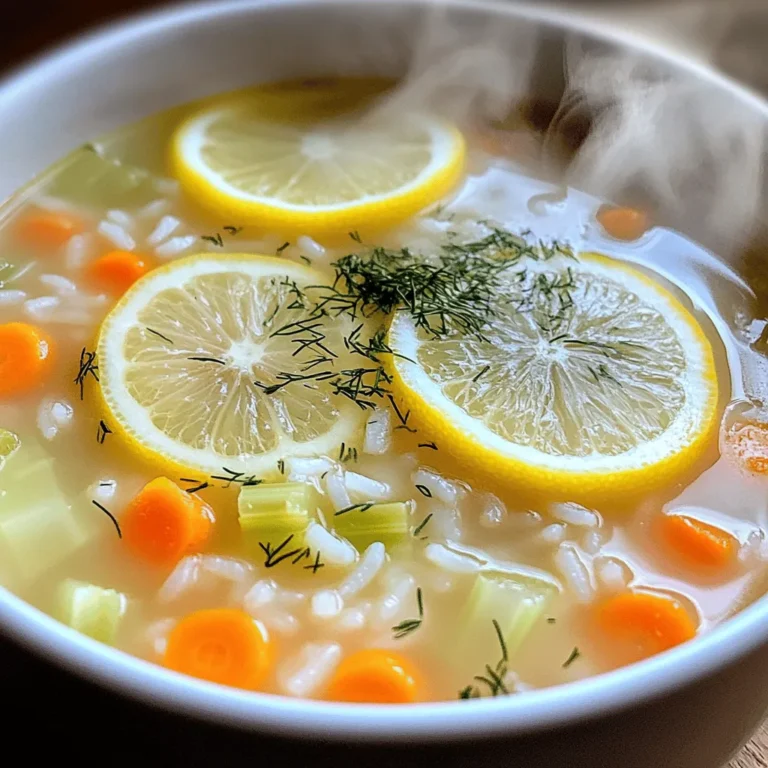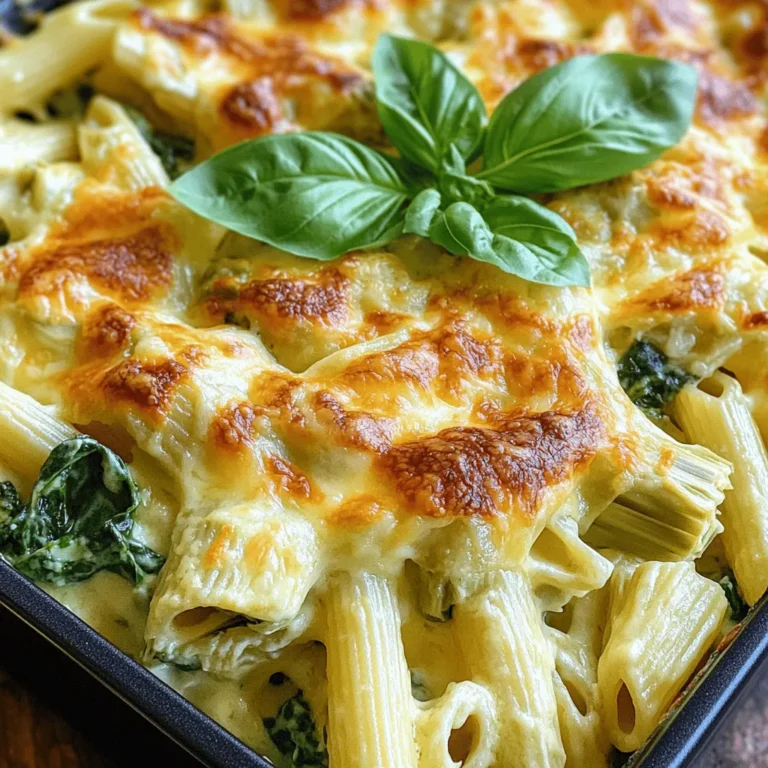Best Homemade Ravioli Sauce Simple and Flavorful Recipe
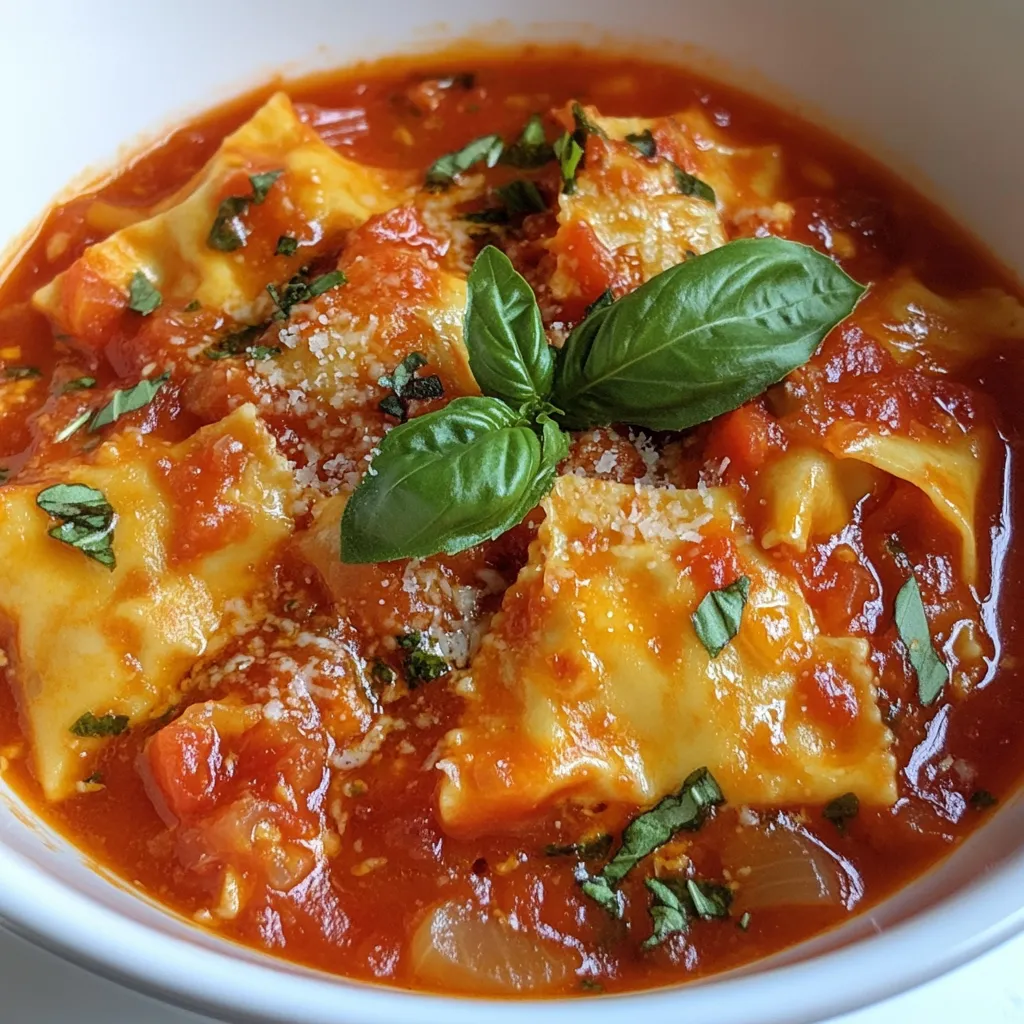
Are you ready to elevate your homemade ravioli experience? This blog post will guide you through creating the best homemade ravioli sauce that is simple yet bursting with flavor. With fresh produce and quality ingredients, I’ll show you how to make a sauce that will impress everyone at your table. Let’s dive into this delicious journey and transform your ravioli nights forever!
Why I Love This Recipe
- Fresh Ingredients: This sauce uses high-quality olive oil and fresh herbs, ensuring a vibrant and authentic flavor that elevates any pasta dish.
- Quick to Prepare: With only 10 minutes of prep time and 25 minutes of simmering, you can have a delicious homemade sauce ready in under an hour.
- Versatile Flavor: The combination of tomatoes, garlic, and herbs creates a rich sauce that pairs perfectly with various pasta types, not just ravioli.
- Customizable: You can easily adjust the spice level or add more vegetables, making it a flexible recipe that suits your taste.
Ingredients
High-Quality Olive Oil
Use 2 tablespoons of high-quality olive oil. This oil adds a rich flavor and helps the sauce cook evenly. Look for extra virgin for the best taste.
Fresh Produce
You need 1 medium onion, finely diced, and 3 cloves of garlic, minced. The onion gives a sweet base, while garlic adds punch. Both make the sauce smell amazing.
Tomatoes and Seasonings
For tomatoes, choose a 15 oz can of crushed tomatoes, preferably San Marzano. They have a sweet and bright taste. Add 1 tablespoon of tomato paste for extra richness. Season with 1 teaspoon of dried oregano, 1 teaspoon of dried basil, and 1/2 teaspoon of red pepper flakes if you like spice. Don’t forget salt and freshly ground black pepper to taste.
Optional Ingredients
You can add 1 tablespoon of balsamic vinegar for depth. Fresh basil leaves work well as a garnish. Grated Parmesan cheese adds a final touch of flavor. These ingredients help elevate your sauce and make it shine.
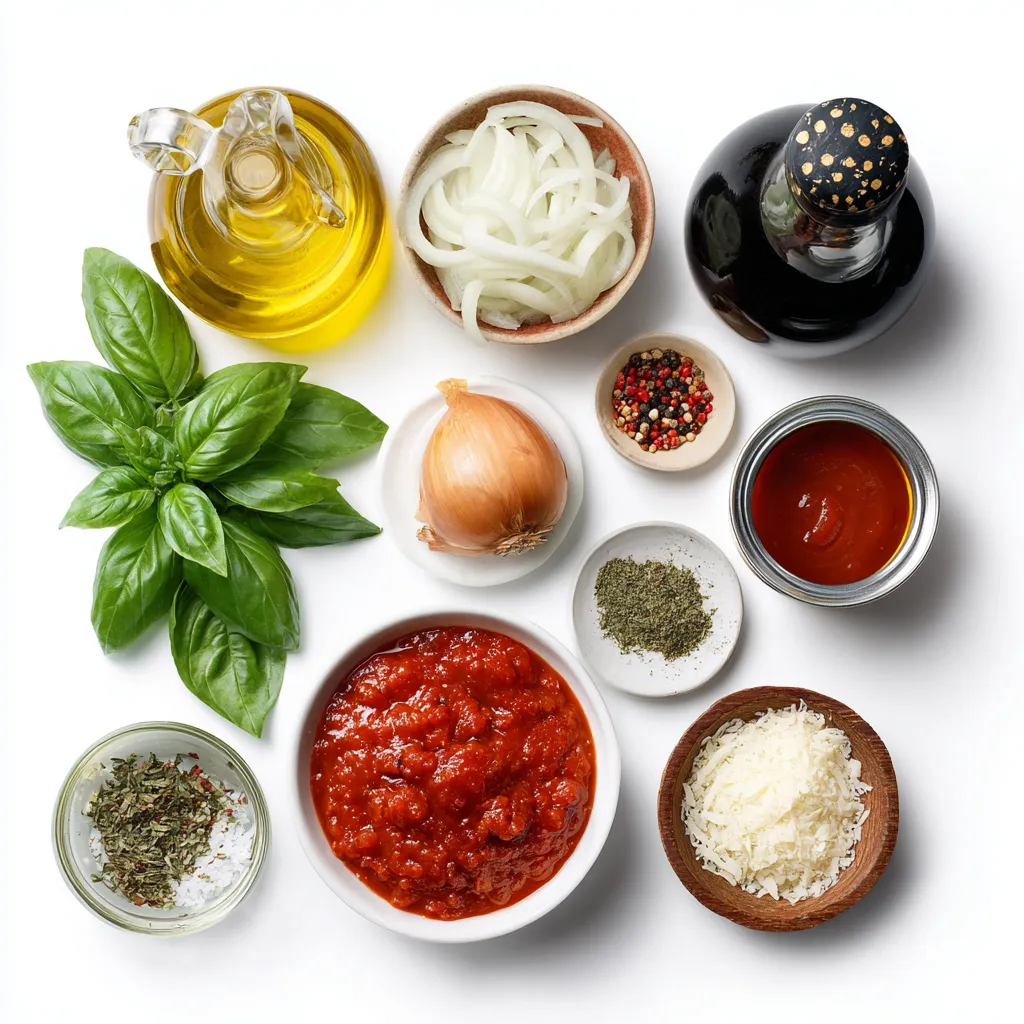
Step-by-Step Instructions
Preparing the Base
Start by heating 2 tablespoons of high-quality olive oil in a large saucepan. Turn the heat to medium until the oil shimmers. Next, add 1 medium onion, finely diced. Sauté the onion for about 5 minutes. Stir frequently until the onions become soft and clear. Then, add 3 cloves of minced garlic. Cook this for 1 minute until it smells great. Be careful not to let the garlic burn.
Creating the Sauce
Now, pour in 1 can (15 oz) of crushed tomatoes, ideally San Marzano. Add 1 tablespoon of tomato paste for richness. Stir well to blend all the ingredients. To season, sprinkle in 1 teaspoon of dried oregano and 1 teaspoon of dried basil. If you like heat, add 1/2 teaspoon of red pepper flakes. Finally, add salt and black pepper to taste.
Simmering for Flavor Development
Let the mixture come to a gentle simmer. Once it bubbles, lower the heat. Keep it simmering uncovered for 20-25 minutes. Stir occasionally to prevent sticking. You want the sauce to thicken nicely. This simmering time develops the flavor, making it rich and savory.
Final Touches
Once your sauce thickens to your liking, stir in 1 tablespoon of balsamic vinegar. This adds depth and balance. Remove the saucepan from heat and cool it slightly. Toss the sauce with your freshly cooked ravioli. To serve, garnish with fresh basil leaves and sprinkle grated Parmesan cheese on top for extra flavor. Enjoy your homemade ravioli sauce!
Tips & Tricks
Selecting the Right Tomatoes
Choose the best tomatoes for your sauce. I love San Marzano tomatoes. They are sweet and less acidic. Look for canned ones if fresh aren’t in season. The right tomatoes make your sauce shine. They add rich flavor and good texture.
Enhancing Flavor with Fresh Herbs
Fresh herbs can change your sauce game. Try using fresh basil. It adds a bright taste. You can also add parsley for a fresh twist. Chop them finely and stir them in at the end. This keeps their flavor strong. If you can’t find fresh herbs, dried ones work too. Just use a little less since they are more concentrated.
Perfecting Consistency
The sauce should be thick but not too thick. If it’s too runny, let it simmer longer. Stir it often to stop it from burning. If it’s too thick, add a splash of water or broth. This keeps the sauce rich and smooth. Aim for a sauce that clings nicely to your ravioli.
Pro Tips
- Use High-Quality Tomatoes: Opt for San Marzano tomatoes for a rich, sweet flavor that elevates your sauce.
- Add Fresh Herbs: If possible, use fresh basil instead of dried for a more vibrant taste and aroma in your sauce.
- Balance the Acidity: If the sauce tastes too acidic, a pinch of sugar can help balance the flavors without altering the taste.
- Let it Simmer: Allow the sauce to simmer longer for a deeper flavor; the longer it cooks, the better the taste will be.
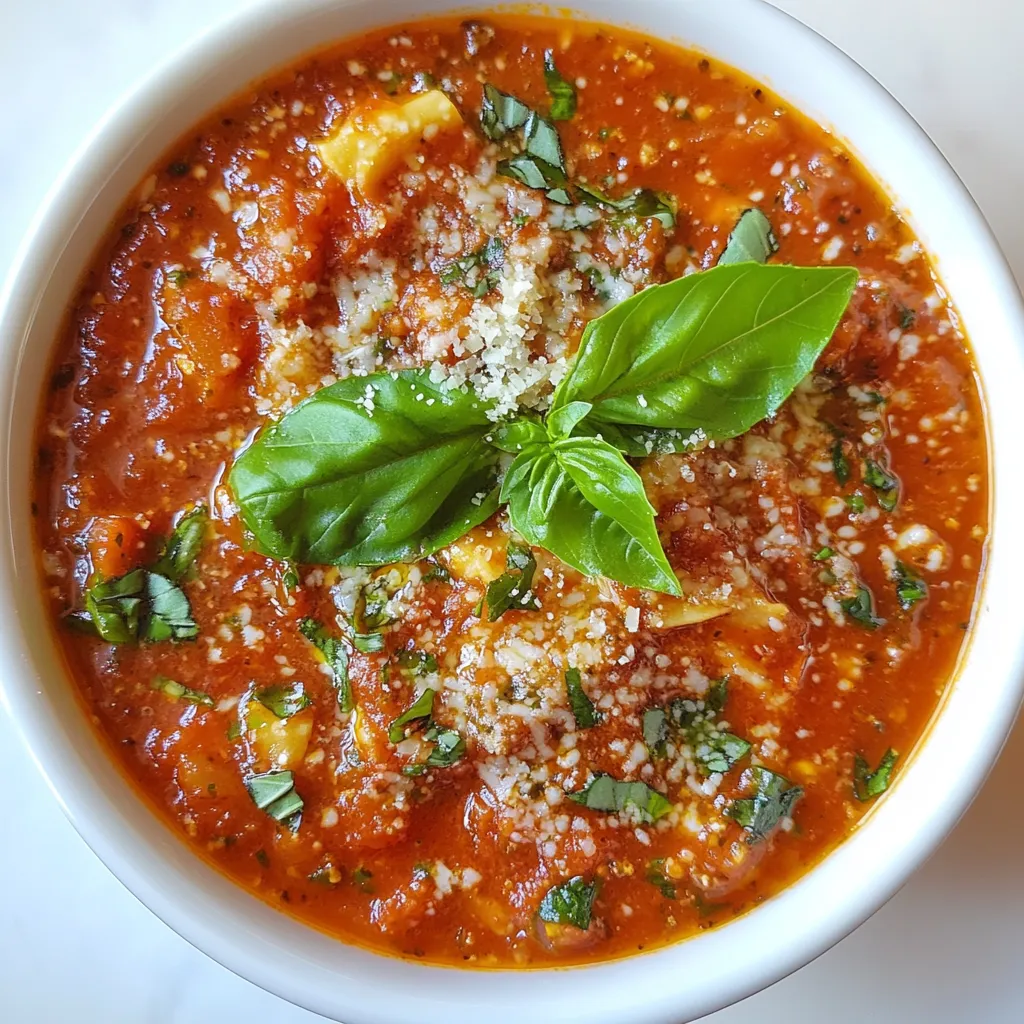
Variations
Spicy Ravioli Sauce
Want to add a kick to your ravioli sauce? You can easily make it spicy. Just add 1/2 teaspoon of red pepper flakes while cooking. This small change can make a big difference. If you like more heat, feel free to add more flakes. It adds a warm and zesty flavor that pairs well with any ravioli.
Creamy Tomato Basil Variation
For a creamy tomato basil sauce, mix in 1/2 cup of heavy cream. Do this right after the sauce simmers. Stir well to combine it. The cream makes the sauce rich and smooth. Add fresh basil leaves at the end for a bright finish. This variation is perfect for those who enjoy a silky texture.
Mushroom-Infused Sauce
If you love mushrooms, this is your go-to sauce. Start by sautéing 1 cup of finely chopped mushrooms with the onion. Cook them until soft before adding garlic. The mushrooms give a deep, earthy flavor. Pair this sauce with cheese ravioli for a tasty experience. This variation adds a nice twist to the classic recipe.
Storage Info
How to Store Leftover Sauce
To store leftover ravioli sauce, let it cool first. Then, pour it into an airtight container. Make sure to seal it well. You can keep it in the fridge for up to five days. Always label the container with the date. This helps you remember when you made it.
Reheating Instructions
Reheating the sauce is simple. You can use a small saucepan or microwave. If using a saucepan, heat over low to medium heat. Stir it often to warm it evenly. If using a microwave, place the sauce in a microwave-safe dish. Heat in short bursts, stirring in between. This keeps the sauce from splattering and burning.
Freezing for Future Use
Freezing sauce is a great way to save it for later. Use a freezer-safe container or a zip-top bag. If using a bag, squeeze out as much air as possible. Label the bag with the date. You can freeze the sauce for up to three months. When ready to use, thaw it in the fridge overnight. Reheat it on the stove or in the microwave before serving.
FAQs
Can I use fresh tomatoes instead of canned?
Yes, you can use fresh tomatoes. Just peel and chop them. Use about 2 to 3 cups of fresh tomatoes to replace one can of crushed tomatoes. This gives a bright, fresh taste to your sauce. Cook them down until they break apart and become saucy.
What type of ravioli pairs best with this sauce?
This sauce works well with many ravioli types. I love it with cheese or spinach and ricotta ravioli. The rich sauce complements these fillings nicely. You can also try it with meat-filled ravioli for extra flavor.
How can I make this sauce vegan-friendly?
To make the sauce vegan, skip the grated Parmesan cheese. You can use nutritional yeast for a cheesy flavor. Ensure all other ingredients are plant-based. The sauce is already free from meat, so it’s easy to adapt.
How long will the sauce last in the fridge?
The sauce lasts up to a week in the fridge. Store it in an airtight container. If you want to keep it longer, freeze it. It can last for up to three months in the freezer. Just thaw it before reheating.
You now know how to make a tasty ravioli sauce. We discussed key ingredients like high-quality olive oil and fresh produce. I shared steps for preparing the base, creating your sauce, and simmering for deep flavor. You learned tips on select tomatoes and enhancing flavor with herbs. We explored variations like spicy or creamy sauce and covered storage tips.
Try these methods to whip up a delicious meal. Enjoy the process and get creative with your own flavor

Savory Homemade Ravioli Sauce
Ingredients
- 2 tablespoons high-quality olive oil
- 1 medium onion, finely diced
- 3 cloves garlic, minced
- 15 oz crushed tomatoes, preferably San Marzano
- 1 tablespoon tomato paste
- 1 teaspoon dried oregano
- 1 teaspoon dried basil
- 0.5 teaspoon red pepper flakes (optional)
- to taste salt
- to taste freshly ground black pepper
- 1 tablespoon balsamic vinegar
- for garnish fresh basil leaves
- for garnish grated Parmesan cheese
Instructions
- In a large saucepan, heat the olive oil over medium heat until shimmering.
- Add the finely diced onion and sauté for about 5 minutes, stirring frequently, until the onions become soft and translucent.
- Incorporate the minced garlic into the saucepan and cook for 1 additional minute, or until it becomes fragrant, being careful not to let it burn.
- Carefully pour in the crushed tomatoes and add the tomato paste, stirring to thoroughly combine all ingredients into a cohesive sauce.
- Season the sauce by adding the dried oregano, dried basil, and red pepper flakes (if desired), along with a sprinkle of salt and freshly cracked black pepper to suit your taste.
- Allow the mixture to come to a gentle simmer. Then, reduce the heat to low and let the sauce simmer uncovered for about 20-25 minutes, stirring occasionally to prevent sticking.
- Once the sauce has thickened to your desired consistency, stir in the balsamic vinegar to enhance the flavors.
- Remove the saucepan from heat and let the sauce cool slightly before tossing it with your freshly cooked ravioli.
- To serve, garnish each plate with fresh basil leaves and generously sprinkle with grated Parmesan cheese for added flavor and visual appeal.

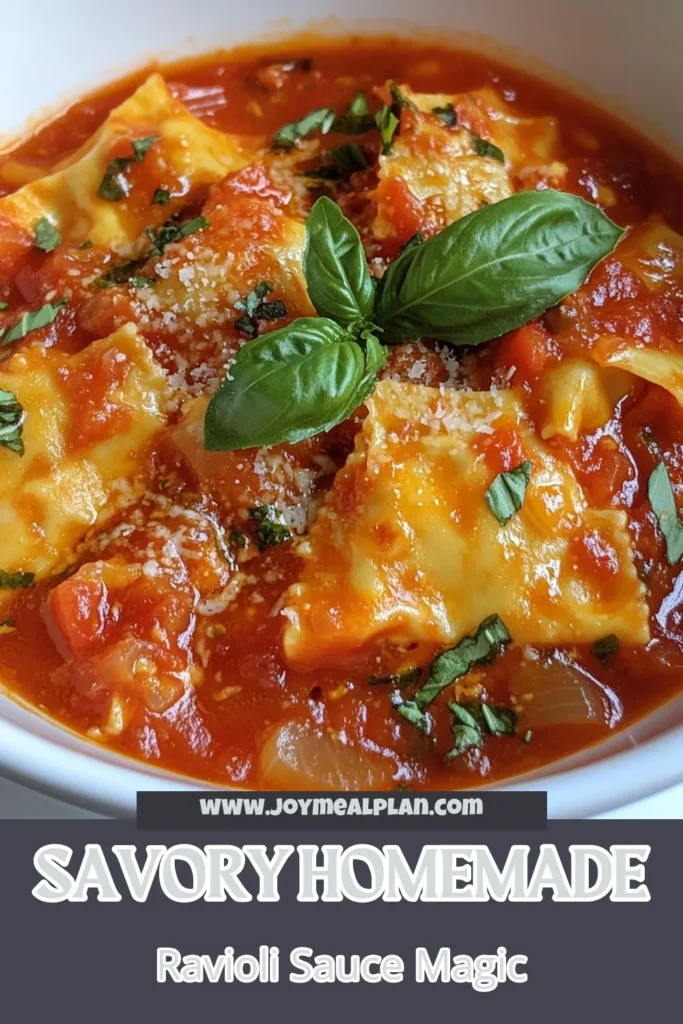
![To make a tasty tomato basil soup, gather these ingredients: - 2 tablespoons extra virgin olive oil - 1 medium yellow onion, finely diced - 3 cloves garlic, minced - 2 cans (14 oz each) diced tomatoes in juice - 2 cups low-sodium vegetable broth - 1 teaspoon granulated sugar - 1 teaspoon dried oregano - Salt and freshly ground black pepper, to taste - 1 cup fresh basil leaves, roughly chopped - 1/2 cup heavy cream (optional for added creaminess) - Crusty bread or homemade croutons, for serving You can change up the flavor of your soup by adding: - A pinch of red pepper flakes for heat - Fresh lemon juice for brightness - A sprinkle of Parmesan cheese for richness - Other herbs like thyme or parsley Fresh basil and tomatoes make a big difference. Here’s how to choose the best: - Basil: Look for bright green leaves. They should be firm, not wilted. Smell the leaves; they should have a strong, sweet aroma. - Tomatoes: Choose ripe tomatoes with no bruises. They should feel heavy and firm. The color should be bright and even, depending on the type. Using high-quality ingredients will enhance the soup's flavor. Enjoy the vibrant taste of fresh basil and tomatoes in your cooking! For the full recipe, check out the [Full Recipe]. First, gather all your ingredients. You will need olive oil, onion, garlic, diced tomatoes, vegetable broth, and spices. Also, have fresh basil and cream ready if you want a richer soup. Start by chopping the onion and mincing the garlic. Dice them small for even cooking. This helps build the soup's flavor from the start. Measure out your diced tomatoes and vegetable broth, so you have them ready. In a large saucepan, heat the olive oil on medium heat. Once hot, add the diced onion. Cook it for about five minutes until it turns soft and clear. Then, add the minced garlic. Stir it for one minute. Be careful not to let it burn. Next, pour in the diced tomatoes and vegetable broth. Stir well to mix everything. Add the sugar, oregano, salt, and pepper. Let the soup come to a gentle boil. Then, reduce the heat to low. Let it simmer for 20 minutes. This helps the flavors mix together nicely. After simmering, take the saucepan off the heat. Let it cool for a few minutes. For a smooth soup, use an immersion blender to blend the soup until it's silky. If you don’t have one, transfer it in batches to a blender. Blend until smooth. Once blended, return the soup to the saucepan. Stir in the chopped basil and cream if you want it creamy. Heat it gently on low for about five minutes. This will let the basil's flavor shine through. Taste your soup before serving. Adjust the salt, pepper, or sugar to your liking. Serve it warm with bread or croutons for a tasty meal. Enjoy your delicious tomato basil soup! For a complete recipe, check the Full Recipe. To make your tomato basil soup extra tasty, focus on fresh herbs. Fresh basil adds a bright touch. You can also use other herbs, like thyme or parsley, for a twist. Seasoning is key! Start with salt and pepper to bring out the flavors. A dash of sugar balances the acidity of the tomatoes. Don’t forget to taste as you go. One common mistake is overcooking the garlic. If it burns, it can turn bitter. Add it just before the tomatoes for the best flavor. Another mistake is skipping the simmering step. This helps the flavors blend well. A quick boil won't do the trick. Lastly, don’t forget to blend the soup well. A chunky texture can be nice, but a smooth soup feels luxurious. Keep your heat at medium for sautéing the onions. This allows them to soften without burning. When it’s time to simmer, lower the heat. A gentle simmer for 20 minutes works best. If you want a silky texture, blend the soup until smooth. A few minutes of gentle heating after blending helps the basil infuse nicely. For the full recipe, check the complete guide above. Enjoy your cooking! {{image_4}} To make a creamy version of tomato basil soup, add heavy cream. This gives the soup a rich and smooth texture. Follow the original recipe and simply stir in 1/2 cup of heavy cream after blending the soup. Heat it gently over low heat for a few minutes. The cream balances the acidity from the tomatoes and adds depth. You can also use coconut cream for a dairy-free option. If you like a chunkier soup, add fresh veggies. Dice up some zucchini, bell peppers, or carrots. Sauté these with the onion at the start. This adds more color and nutrients to your dish. Keep the diced tomatoes, but don’t blend the soup completely. Just stir in the chopped fresh basil at the end for extra flavor. This version is hearty and satisfying. To make a vegan version, skip the heavy cream and use coconut milk instead. It gives a creamy texture and a hint of sweetness. Use vegetable broth and fresh basil as usual. This version keeps the dish plant-based and delicious. You’ll still enjoy all the flavors without animal products. For a kick, add crushed red pepper flakes when cooking. These variations show just how versatile tomato basil soup can be. Each version brings its own twist while keeping that classic flavor. For the full recipe, check out the complete guide. To store your tomato basil soup, let it cool first. Pour it into an airtight container. You can keep it in the fridge for 3 to 4 days. Make sure the lid seals tightly to keep it fresh. If you want to save it longer, freezing is a great option. For freezing, use freezer-safe containers. Leave some space at the top, as the soup will expand when it freezes. You can store it in the freezer for up to 3 months. Label the container with the date, so you know when you made it. It helps to freeze it in portion sizes for easy use later. When you're ready to eat, thaw the soup in the fridge overnight. To reheat, pour it into a pot over low heat. Stir often to prevent sticking. If you want a creamier texture, add a splash of cream while heating. You can also use a microwave, but stir halfway through to heat evenly. Enjoy your delicious soup! You can serve many tasty sides with Tomato Basil Soup. Here are some great options: - Crusty bread - Grilled cheese sandwiches - Homemade croutons - A fresh salad These choices add texture and flavor. For a fun twist, try a cheesy garlic bread. It pairs well with the soup's warmth. Tomato Basil Soup lasts about 3 to 5 days in the fridge. Store it in an airtight container to keep it fresh. To enjoy it longer, you can freeze it. Yes, you can make Tomato Basil Soup in advance. It tastes even better the next day! Just cook the soup, let it cool, and store it in the fridge. You can also freeze it for later use. When ready to serve, simply reheat it on the stove or in the microwave. For a full recipe, check out the Hearty Tomato Basil Delight. Making Tomato Basil Soup is simple and rewarding. We covered the key ingredients, preparation steps, and cooking tips. You can choose fresh basil and ripe tomatoes for the best taste. Variations like creamy or vegan options add more fun. Remember to store leftovers properly to keep them fresh. By avoiding common mistakes, you can create a perfect soup each time. I hope these insights inspire you to enjoy this classic dish all year round.](https://joymealplan.com/wp-content/uploads/2025/06/73c8b43a-025c-4169-ae99-725afa6fdd07-768x768.webp)


